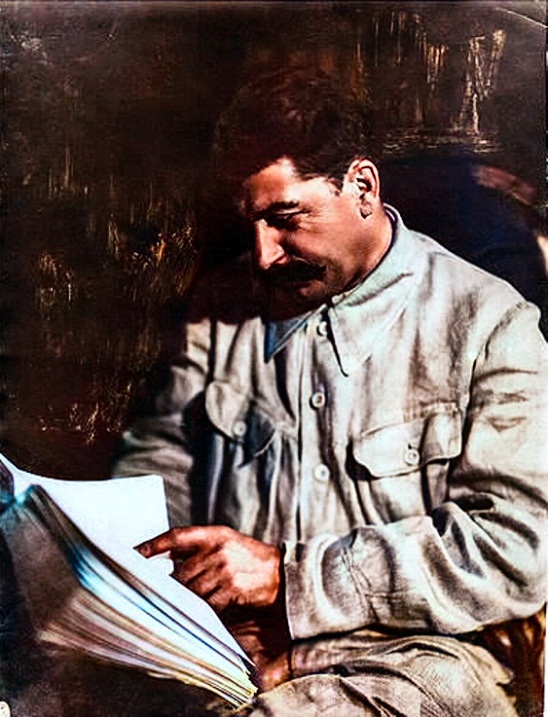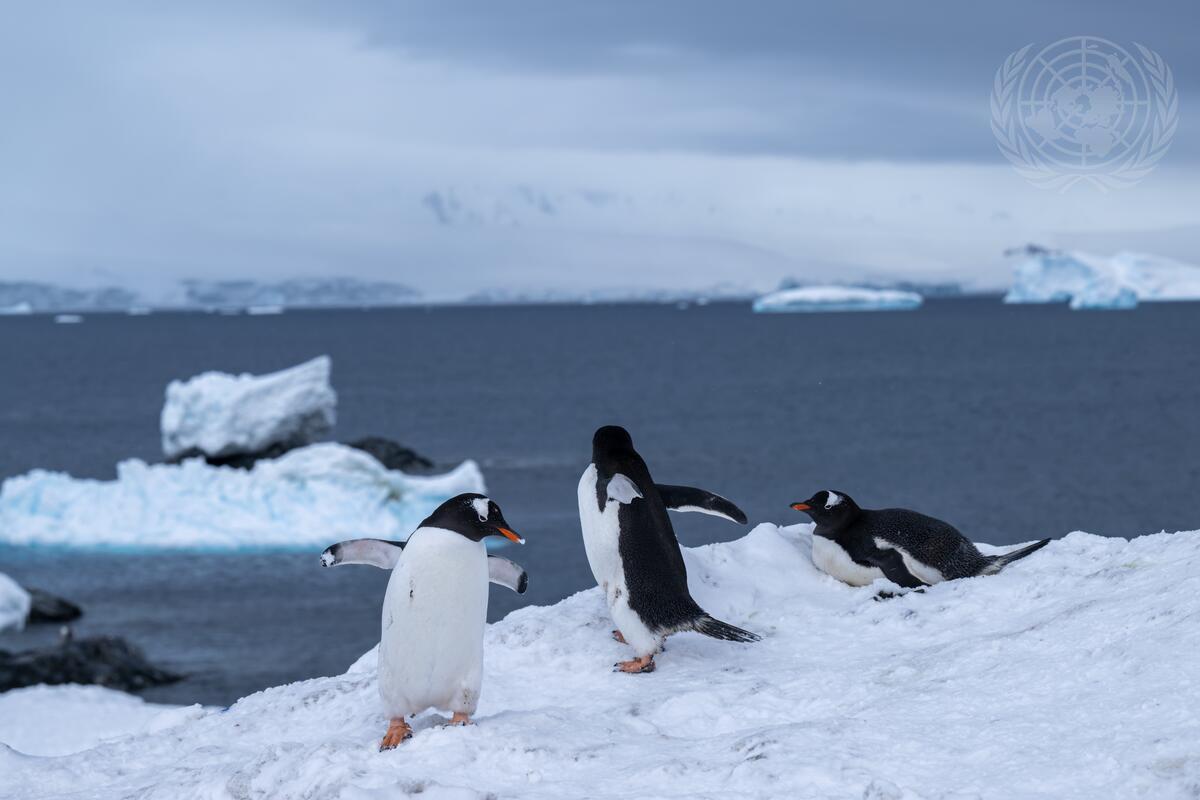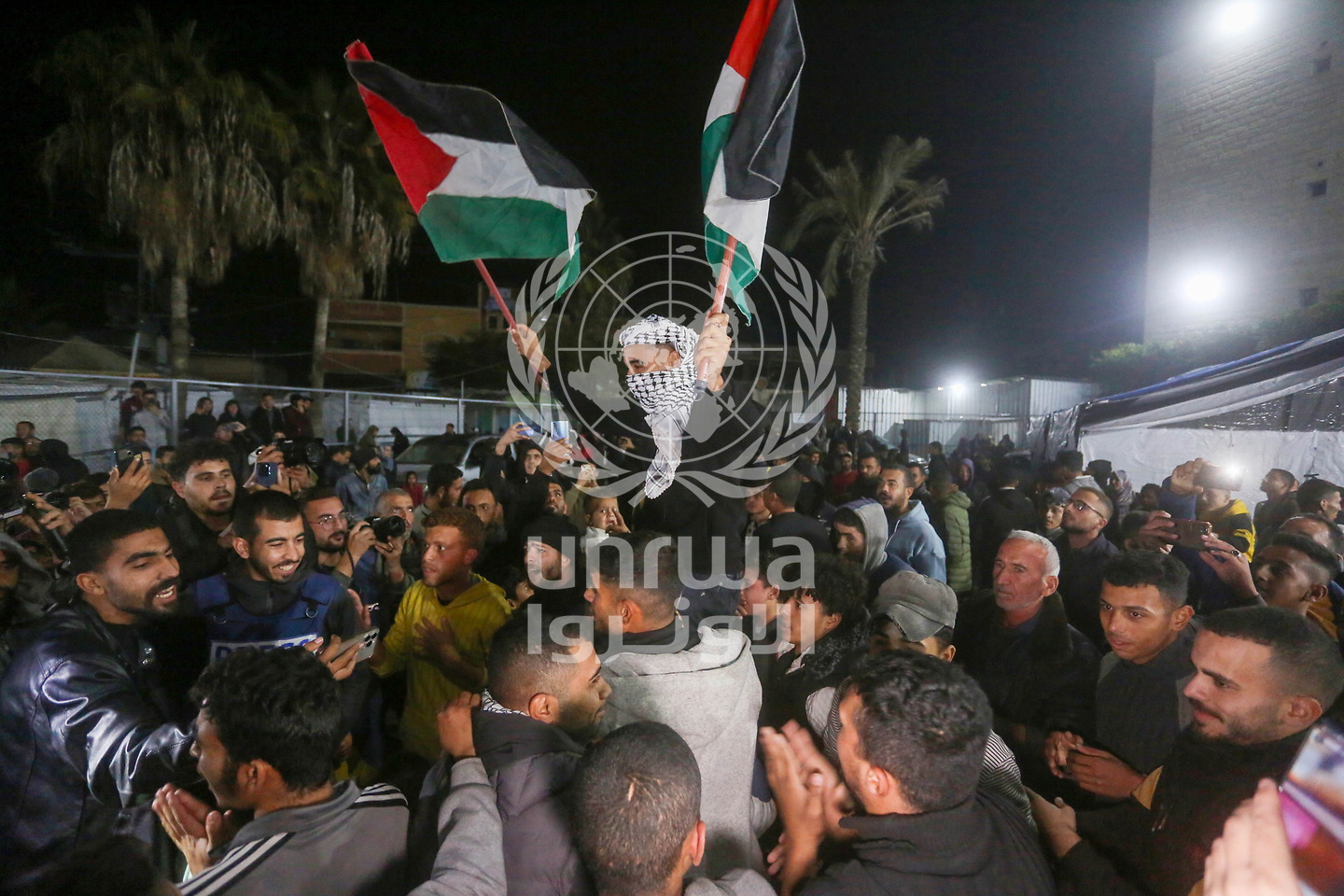

(Satire)
Exclusive Hexbear news on the UN: Security Council to hold 98420th meeting “The situation in the Hexbear news thread”, it is expected a sanctions regime to be adopted against the mod tyranny.
Recommended RSS feeds for UN and UN related organizations:
For nerds:


(Satire)
Exclusive Hexbear news on the UN: Security Council to hold 98420th meeting “The situation in the Hexbear news thread”, it is expected a sanctions regime to be adopted against the mod tyranny.



A view of penguins at the Base Presidente Eduardo Frei Montalva in Antarctica.
Secretary-General António Guterres visited Antarctica to see the deadly impact of the climate crisis. While in Antarctica the Secretary-General saw the Collins and Nelson Glaciers, as well as the Kopaitic Island, which is home to penguins and other species which are being impacted by climate change.
©UN Photo/Mark Garten, 2023-11-23


News from World Food Program, 2025-01-19, via ReliefWeb.
World Food Programme (WFP) trucks have started crossing into Gaza [xcancel] after the ceasefire came into effect. WFP trucks will enter from Egypt and via Ashdod, Israel.
WFP welcomes the agreed ceasefire announced Wednesday (15 January). We emphasize that this is only the start – not the end – of what’s needed to reach desperate and hungry families in Gaza. WFP needs US$300 million to meet urgent needs in the enclave over the next six months.
- WFP calls on all parties to do what is in their power to halt any further fighting and ensure safe humanitarian access - the war has left more than 2 million people fully dependent on food assistance, homeless, and without any income.
- We need all border crossings open and functioning reliably. We also need humanitarian teams to be able to move freely and safely across Gaza to reach those in need.
- If these conditions are in place, WFP is ready to scale up and distribute lifesaving food for over a million people in Gaza.
- The needs in Gaza are immense. Recovery will require a full-scale humanitarian response with all agencies coming together, including UNRWA, to provide lifesaving assistance to 2 million people.
WFP has enough food pre-positioned along the borders and on its way to Gaza to feed over a million people for three months. UNRWA has enough supplies to support another million. For WFP, this includes food parcels, wheat flour, commodities for hot meals, and nutrition supplements.
- WFP is working to help revive what remains of Gaza’s economy. To support local shops and empower people with the freedom of choice, WFP plans to expand its cash and voucher assistance to 100,000 people (once commercial activity and cash liquidity allow).
- WFP will also support whatever factories remain, wheat flour mills, and shops that can resume operations.
- Using specialized teams, WFP has begun repairing and removing rubble from essential roads/key supply routes to allow for faster transportation of aid, on behalf of WFP and humanitarian partners.
- WFP can send around 1,600 trucks of food (30,200 tons) each month to facilitate distributions for over 1 million people. In order to reach everyone in need, UNRWA’s support is critical. WFP is committed to bolstering UNRWA’s food assistance delivery efforts.
If commercial supplies of food and other goods are in place, and local banks have the liquidity needed, we will also provide cash to families so they can buy food and other essentials
- WFP’s goal is to provide immediate food aid and to support local food production, re-stock bakeries, and provide nutrition supplements for thousands of children.
- To reach people and make a meaningful impact, WFP also urgently need the international community’s support with funding, so we that can increase capacity and sustain our humanitarian staffing.
- Barely any food has gone into besieged North Gaza for more than two months. Winter cold and rain are further reducing people’s ability to survive.
- Food security in Gaza has been worsening, with people becoming weaker by the day; there is almost no fresh food (fruit, vegetables, meat, fish), shops are empty, bakeries have been unable to operate, lacking fuel, flour or both.
- So far this year, WFP has only been able to reach 305,000 people in Gaza and 177,000 in the West Bank.
- With supplies inside Gaza severely strained, most of the people reached received hot meals, or significantly reduced rations.
- WFP distributed 34,683 ready-to-eat meals (RTEs) across Gaza, reaching 151,840 displaced people. Less than ten percent of the 1.675 million targeted population received assistance. In Gaza City, families received two food parcels.
- Hot meals were served from 62 kitchens to 250,000 displaced persons across Gaza.
- Due to supply shortages, no bakeries in southern and central Gaza have been operational for over a month. In Gaza City, five bakeries are open but have cut production by 50 percent due to fuel shortages, with remaining fuel expected to last only two to three days.
- In December, WFP dispatched over 14,000 metric tons of food into Gaza but faced challenges due to insecurity and looting, leading to depleted January stocks. To reach more people, WFP further reduced its rations, reaching 1.4 million people, but the majority received just one 25kg bag of wheat flour instead of the full ration of two food parcels and two bags of wheat flour.
- Currently, all three crossings into south and central Gaza (Kerem Shalom, Kissufim, and Gate 96) are open but with severely limited capacity due to insecurity, including armed looting and attacks on aid convoy routes. In the north, West Erez (Zikim) crossing is operational but can only be used to supply Gaza City. Access to North Gaza governorate has been consistently denied.
- Around 80,000 tons of food is waiting outside Gaza or on its way into Gaza (Jordan, Egypt and Ashdod) – enough to feed over a million people for three months.


UN News, 2025-01-17: “[United Nations] Security Council briefed on challenges to peackeeping in Lebanon, Syria”
This news is about the 9840th Meeting of the Security Council. Verbatim records the be issued as document S/PV.9840 | Web TV video recording of meeting.
Under-Secretary-General for Peace Operations Jean-Pierre Lacroix was joined by Major General Patrick Gauchat, Head of the UN Truce Supervision Organization (UNTSO) who is temporarily in charge of the UN force in the Golan, UNDOF.
Mr. Lacroix is currently in Lebanon, where the UN Interim Force in the country UNIFIL, monitors the Blue Line border of separation with Israel. He is there with the UN Secretary-General and they visited the Mission’s area of operations earlier that day.
The peacekeeping chief updated on UNIFIL’s activities as a fragile truce between Lebanon and Israel continues to hold.
The agreement, signed on 27 November 2024, ended more than a year of hostilities between Hezbollah militants and the Israel Defense Forces (IDF), triggered by the Gaza war.
It calls for Israel to withdraw from areas of southern Lebanon within 60 days, and for Lebanese troops to redeploy during this period.
Hezbollah and Israeli forces previously clashed nearly 20 years ago, and the Council adopted Resolution 1701 (2006), which continues to apply today.
“With 10 days until the end of the stated 60-day period for the withdrawal of Israeli forces from Lebanon, however, Israeli demolitions of tunnels, buildings, and agricultural land continue,” he said.
“Some airstrikes have also been reported, as have ongoing violations of Lebanese airspace.”
UNIFIL also continues to detect trajectories of projectiles fired from south to north of the Blue Line, although at a far lower level compared to before the truce.
“Noting that the Israel Defense Forces has stated that its actions are targeting Hezbollah assets and personnel, the continued presence of the Israel Defense Forces in Lebanon is a violation of resolution 1701,” he said.
“We urge the Israel Defense Forces to withdraw from Lebanese territory without delay, certainly by the end of the period envisaged in the announcement of the cessation of hostilities.”
Mr. Lacroix told the Council the past year has clearly demonstrated the significant presence of unauthorized armed personnel, assets and weapons related to Hezbollah and other non-State armed groups south of the Litani – in blatant violation of the UN resolution.
He said the LAF have shown increased resolve in dealing with these in recent weeks. Furthermore, UNIFIL has also located 116 caches of weapons and ammunition, in addition to observing potential tunnels and Hezbollah sites, and informed the LAF for their appropriate action.
The Mission’s unrestricted freedom of movement and full access throughout its area of operations are critical to support the full implementation of the resolution, he said.
Yet, seven weeks since the truce, most contingents remain confined to base and occasionally have to seek shelter in bunkers due to nearby IDF military activity or IDF advisories.
Operational activities are further constrained due to the presence of unexploded ordnance, IDF roadblocks, and interference from local people.
“As the IDF has been replying to very few of the Mission’s requests for deconfliction, the Mission has adjusted to a notification system for critical operational and logistics movements,” he said.
Mr. Lacroix noted that while challenges remain in Lebanon, “there is reason for optimism coupled with strong determination that there be no return to the past.”
He stressed that confidence in security and stability along the Blue Line is necessary for communities in southern Lebanon and northern Israel.
“The ongoing returns of residents to southern Lebanon will continue as Israeli forces withdraw and as reconstruction efforts gather speed. We note that Israel has also presented a plan for the return of its residents to communities close to the Blue Line, in March 2025,” he said.
Major General Patrick Gauchat emphasised the operational difficulties his mission has encountered in maintaining its mandate amid heightened tensions in the area of separation.
“While UNDOF has had continuous contact with Syrian interlocutors throughout these recent developments, liaison by UNDOF with Syria is impacted,” he explained, noting that efforts are underway to establish stable communication channels with the de facto authorities.
UNDOF peacekeepers, supported by UN Truce Supervision Organization (UNTSO) observers, remain at their pre-December 2024 positions. They continue key tasks such as monitoring the ceasefire line and patrolling the ceasefire line.
The Israel Defense Forces (IDF) have undertaken construction work using heavy equipment and setting up communication in the area of separation as a “temporary defensive measure,” Mr. Gauchat quoted.
UNDOF has informed its Israeli counterparts that their presence and activities in this area violate the 1974 Disengagement of Forces Agreement.
The IDF’s presence and roadblocks have severely impacted UNDOF’s operational capacity, reducing movements from 55 to 60 operations daily to just 10 essential logistics missions.
However, the mission has adapted its approach, increasing weekly patrols from 10 to 40 and addressing urgent safety concerns, such as the neutralisation of unexploded ordnance in public areas.
Residents of the Golan have expressed concerns to UNDOF, calling for the IDF to leave their villages. Some reported instances of searches and arrests of their relatives.
UNDOF is working to understand and address these grievances through ongoing liaison efforts.
“It is imperative that the UN peacekeepers are allowed to carry out their mandated tasks without obstruction,” Mr. Gauchat stressed, urging all parties to maintain the ceasefire and respect the terms of the 1974 Agreement.
“We count on the continued support of Member States to return to full mandate implementation,” he concluded.
(Being new to this, criticism of my quoting, or other thoughts on how you think this account should function, are appreciated)


Meeting coverage (SC/15968) from yesterdays 9839th meeting (“Maintenance of peace and security of Ukraine”) of the United Nations Security Council (Verbatim recordings to be issued as S/PV.9839, Web TV recording), as quoted by me (see SC/15968 for full version):
Turning to the humanitarian crisis, [Rosemary DiCarlo, Under-Secretary-General for Political and Peacebuilding Affairs] noted that 12.7 million people will require assistance this year and urged the international community to fully support the 2025 Humanitarian Needs and Response Plan. The attacks “have also made the situation increasingly dangerous for the diplomatic community and international organizations,” she pointed out, stressing that diplomatic and international personnel and assets must be protected.
The Council also heard from Ukraine’s delegate, who stressed the need to counteract the Russian Federation’s “aggressive, imperialistic policies”. Recalling that one of Russian Federation President Vladimir V. Putin’s closest accomplices recently expressed the hope that “Ukraine will cease to exist in 2025,” he said this destructive ambition has guided that country’s policy for decades. It is essential to strengthen Ukraine’s air defence capabilities and dry up the Russian Federation’s oil and gas revenue streams by strengthening sanctions. That country’s “war budget for 2025 is 25 per cent bigger than last year’s”, he said, adding: “If we want to stop the war, we should cut off Putin’s cash flow.”
However, the representative of the Russian Federation said that things are quickly unravelling for Kyiv. Many high-level officials are fleeing the country, he said, adding that those speaking out against Ukraine’s regime face torture. The Ukrainian Armed Forces are being pushed back, and losing thousands of soldiers. Ukraine President Volodymyr Zelenskyy is nervous about the danger of having fresh elections, and the fact that the United States Government could audit assistance to Ukraine and examine the scope of the corruption in his country, he said, adding that there are rumours in Kyiv that the regime is preparing a large-scale provocation for which Russian Federation will be blamed.
As for the “Washington puppeteers” of the Kyiv regime, he said, they are worried that their investment in the “anti-Russia project” is going to collapse, similar to what happened with the United States in 2021 in Afghanistan. The rhetoric of the United States and its satellites here has changed considerably, he went on to say. “Initially, they were talking about the need to ensure that Ukraine is victorious,” he said. Then they moved on to supporting the Kyiv regime as long as it takes for the Russian Federation not to be victorious. And today, the idea is to ensure that the “Ukrainian sinking ship” has a strong negotiating position, he said.
The representative of the United States countered this, stressing that “in more than 1,000 days of this reckless war of choice, Putin has failed to achieve any of his goals in Ukraine; instead, he has left Russia’s power and influence greatly diminished”. Some 700,000 Russian soldiers are dead or injured. Meanwhile, Ukraine remains “strong and defiant” as a free and sovereign democracy.
The Russian Federation’s forces have systematically attacked Ukraine’s energy infrastructure, “weaponizing winter” by leaving thousands of households without power, she said. They have abducted Ukrainian children and tried to erase their identities. And yet China’s exports continue to directly fuel the Russian Federation’s war against Ukraine and its attacks against civilian infrastructure. “This support makes China the decisive enabler of Russia’s war,” she added.
But, China’s delegate described this as “downright lies through and through” adding that, if his country had really provided military supplies to the Russian Federation, the situation would not be where it is now. His Government has repeatedly emphasized respect for the sovereignty of and territorial integrity of all countries. The United States has used the Ukraine situation to advance its own geopolitical strategy, wanting “nothing more than a weakened and defeated Russian Federation”, he said.
The representative of the Republic of Korea said the testimonies of two soldiers from the Democratic People’s Republic of Korea, captured in the Kursk Oblast, clearly demonstrate that troops from that country “are engaged in combat and being dissipated as expendables”. The two soldiers were unaware of being deployed for the war against Ukraine, he said, adding that they were told they were participating in combat simulation drills. “As a native Korean speaker, I can definitively tell that those two soldiers spoke in Korean with North Korean accents,” he said. “Despite Pyongyang’s efforts to muzzle any rumors,” he said, soldiers’ families in the Democratic People’s Republic of Korea are fearful that their “sons and brothers are being used as slave soldiers and mere cannon fodder”.
Speakers also highlighted the humanitarian suffering, with the representative of Denmark noting that “Each passing day brings further death, destruction and hardship,” for Ukrainians. Millions struggle to secure heating, water and electricity in the cold winter months. “These are not just abstract words in a statement; these represent human lives,” she added. Somalia’s delegate stressed the need to ensure humanitarian aid, noting that 2 million children require “multisectoral assistance”, while Panama’s representative demanded that humanitarian personnel be protected. “They make herculean efforts to provide assistance to the thousands of civilians unjustly affected,” he added. Pakistan’s delegate stressed that “the solution lies in dialogue and negotiations and not on the battlefield”.


Joyful reactions of Palestinians in Deir el-Balah after news on ceasefire, Gaza Strip. © 2025 UNRWA Photo by Ashraf Amra



Meeting record to be issued as S/PV.9839 (Not currently available)
Web TV recording: https://webtv.un.org/en/asset/k1k/k1kqkh2hd7 (China speaks at 1:20:49)
News from the World Health Organization, 2025-01-20, via ReliefWeb.
Tanzania confirms outbreak of Marburg virus disease [partial quote]